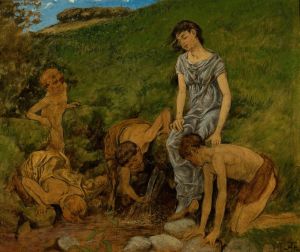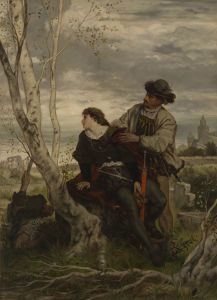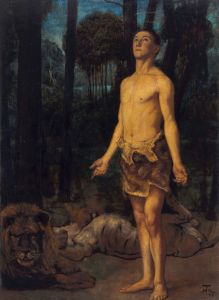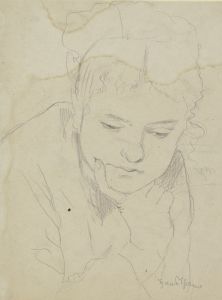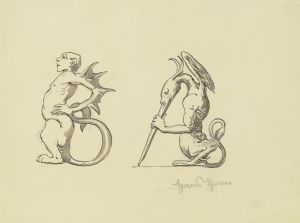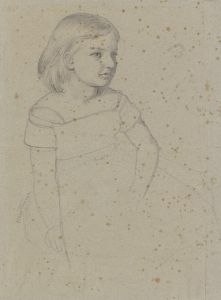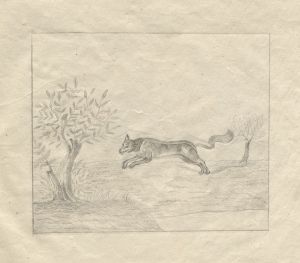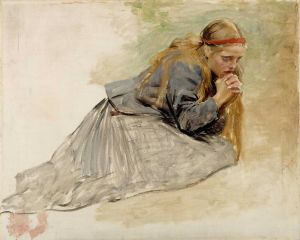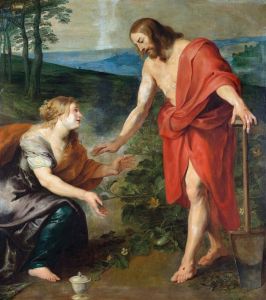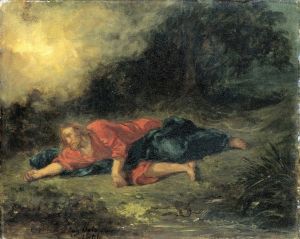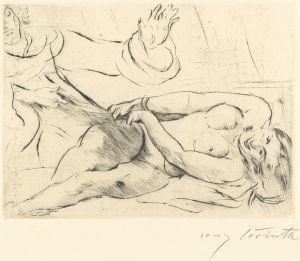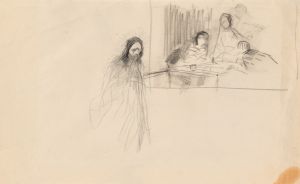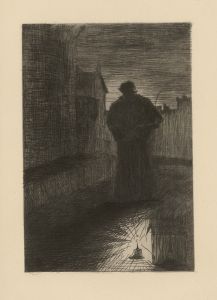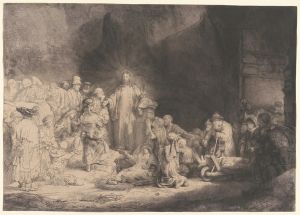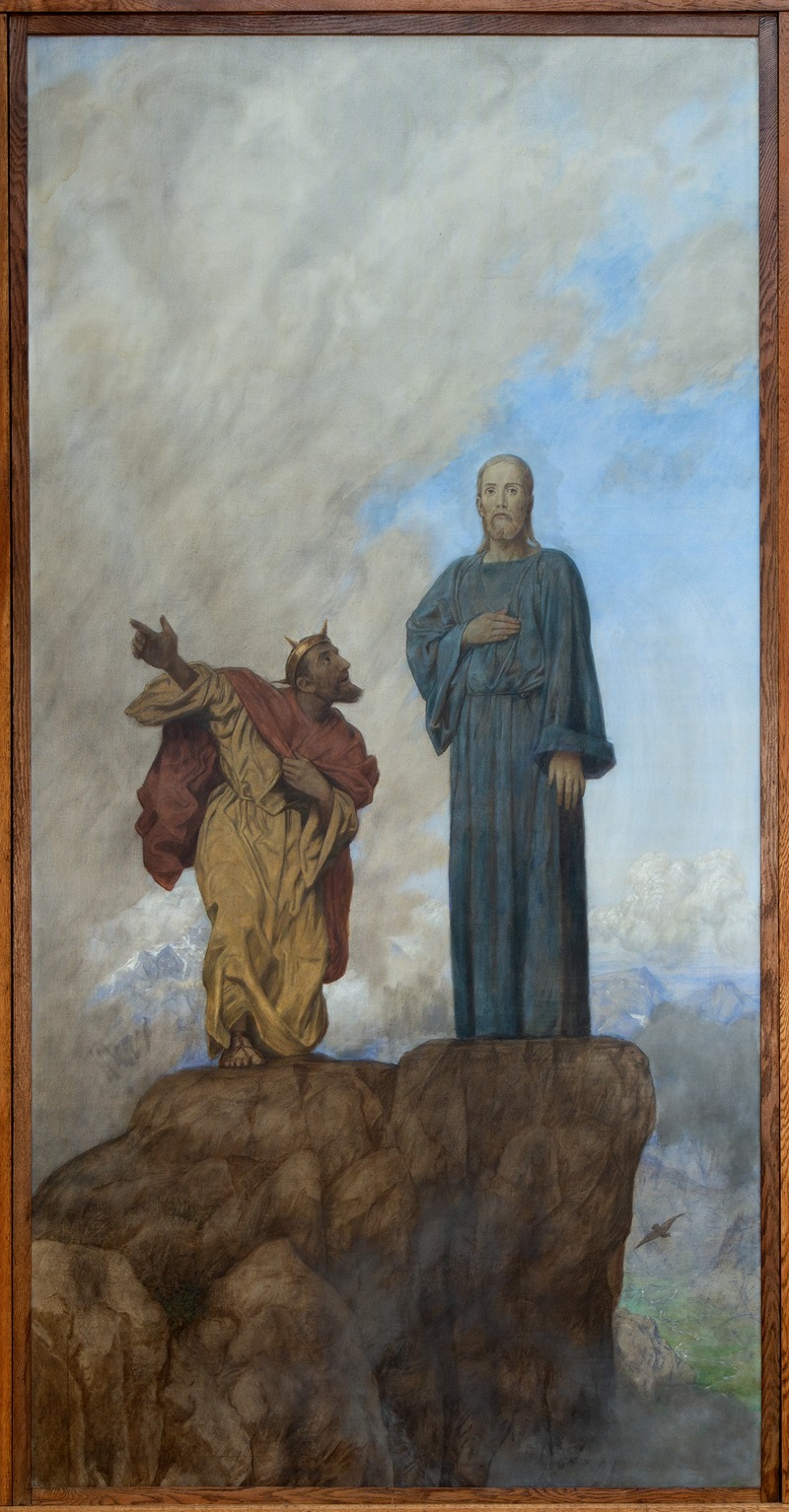
Versuchung Christi
A hand-painted replica of Hans Thoma’s masterpiece Versuchung Christi, meticulously crafted by professional artists to capture the true essence of the original. Each piece is created with museum-quality canvas and rare mineral pigments, carefully painted by experienced artists with delicate brushstrokes and rich, layered colors to perfectly recreate the texture of the original artwork. Unlike machine-printed reproductions, this hand-painted version brings the painting to life, infused with the artist’s emotions and skill in every stroke. Whether for personal collection or home decoration, it instantly elevates the artistic atmosphere of any space.
Hans Thoma's painting Versuchung Christi (The Temptation of Christ) is a work by the German painter Hans Thoma (1839–1924), a prominent figure in 19th-century German art. Thoma is known for his landscapes, portraits, and religious-themed works, often characterized by a blend of realism and symbolism.
Versuchung Christi depicts the biblical scene of the Temptation of Christ, as described in the Gospels of Matthew, Mark, and Luke. In this narrative, Jesus is led into the wilderness, where he fasts for forty days and is tempted by the devil. The painting reflects Thoma's interpretation of this significant moment in Christian theology, though specific details about the composition and style of this particular work are not widely documented.
Hans Thoma's art often drew inspiration from his deep connection to nature and his interest in German Romanticism. His works frequently incorporated religious and mythological themes, rendered in a style that combined traditional techniques with a personal, introspective approach. Thoma's ability to convey spiritual and moral themes through his art earned him recognition during his lifetime, and he became a respected figure in the German art world.
Unfortunately, detailed information about Versuchung Christi, including its creation date, current location, and specific artistic elements, is not readily available in existing records. It is known, however, that Thoma's religious works often sought to evoke a sense of contemplation and moral reflection, which may also be true of this painting.
For further research, consulting museum collections or archives that feature Hans Thoma's works may provide additional insights into this particular painting.





